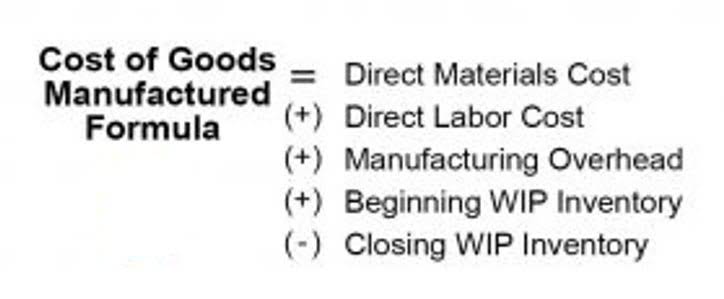
However, if the company abuses this privilege and consistently pays late, suppliers might shorten the payment terms or require upfront payments, disrupting the retailer’s business operations. To illustrate these concepts, consider a company that orders $5,000 worth of materials from a supplier offering a 5% discount for payments made within 15 days. If it takes advantage of the discount, the actual payment would be $4,750, and the company would record a $250 discount as a reduction in the cost of goods sold. Trade payables are liabilities directly relating to business operations, such as purchases of goods or services used to carry out the main objects of the business. So, liabilities such as maintenance expenses and interest payables for borrowings fall into the non-trade payables.
Leveraging Trade Payables for Business Growth
Poor management can result in missed payments, late fees, or financial instability, affecting the company’s credit and reputation. Trade Payables carry a higher risk if not managed properly, as late payments can damage supplier relationships and lead to supply disruptions. A poor trade accounts payable process can damage your vendor relations and open you up to fraud risk. Accounts payable refers to the money owed to your creditors for goods or services already received. This money is generally due in a short period, ranging from a day to a few months, and hence comes under short-term liabilities. Operational expenses, overhead expenses, and capital expenditures can all be categorized as accounts payable so long as it’s a purchase made on credit directly from a vendor or supplier.
Ross Mckinley Chartered Certified Accountants
To further complicate the situation, some organizations may be exempt from both a sales tax and a use tax depending on the state laws. A discount of 1% for paying 20 days early equates to an annual interest rate of approximately 18%. A receiving report is a company’s documentation of the goods it what are trade payables has received. The quantity and description of the goods shown on the receiving report should be compared to the information on the company’s purchase order. Reconcile the suppliers’ invoices to the suppliers’ statement to ensure the amount is correct.
Accrued Expenses

Trade payable is paid off according to the due dates or payment terms mentioned on the invoice and processed by the accounts payable department. The accounts payable team generally extracts data from the invoice and updates the database either manually or with the help of invoice automation software or OCR technology. The team then matches the invoice with other supporting documents before gathering necessary approvals and processing payment. When trying to figure out whether a purchase is accounts payable or trade payable, look at what was bought and how it’s used in the business. For a purchase to be considered trade payables, what was purchased can only be used in the manufacturing process once. The ledger is a clear breakdown of all accounts payable transactions such as incoming invoices, payments, and adjustments.
- However, if they are going to be tracked in a separate account, the accounts payable team needs to be extra diligent to not miscategorize invoices or record them twice.
- This would slowly create insightful information in the minds of investors.
- The balance in Accrued Liabilities will be reported in the current liability section of the balance sheet immediately after Accounts Payable.
- Start tracking your payables more efficiently today to see the benefits of improved financial management.
- Generally Accepted Accounting Principles (GAAP) require businesses to record trade payables at their full value when the liability occurs—not net of discounts or disputes.
- Accounts Payable covers a broader range of expenses, including operational costs like services, rent, and software subscriptions.

Implementing best practices enhances the effectiveness and reliability of audits, ensuring accurate financial reporting and compliance with accounting standards. Dedicated to bringing readers the latest trends, insights, and best practices in procurement and supply chain management. As a collective of industry professionals and enthusiasts, we aim to empower organizations with actionable strategies, innovative tools, and thought leadership that drive value and efficiency.
- Explore strategies for managing trade payables to enhance your company’s financial health and streamline accounting processes.
- The company then writes a check to pay the bill so the accountant enters a $500 credit to the checking account and enters a debit for $500 in the accounts payable column.
- To illustrate these concepts, consider a company that orders $5,000 worth of materials from a supplier offering a 5% discount for payments made within 15 days.
- This allows the retailer to sell the goods and generate revenue well before the payment is due to the supplier, thereby improving cash flow during a critical sales period.
- Buying things on credit gives businesses an opportunity to take control of their cash flow.
Accounts payable vs trade payable: what’s the difference?
Any adjustments that are required are used to document goods and services that have been delivered but not yet billed. A bill or invoice from a supplier of goods or services on credit is often referred to as a vendor invoice. The vendor invoices are entered as credits in the Accounts Payable account, thereby increasing the credit balance in Accounts Payable.

Days Payable Outstanding (DPO): Definition and How It’s Calculated
Adapting your trade payables strategy to the broader economy helps balance working capital needs with supplier trust. Trade payables are tracked through accounts payable ledgers, which provide visibility into outstanding obligations and help ensure timely settlement. Proper management avoids late fees, keeps liquidity strong, and maintains supplier trust.
Vendor invoices without purchase orders or receiving reports

Trades payable refers to the money you owe vendors for inventory-related goods — for example, business supplies or inventory. On the other hand, accounts payable include all your short-term debts or obligations, including trade payables. Accountants can Bookkeeping vs. Accounting record these expenses on the company’s balance sheet as non-current or current liabilities.
Comparing accounts payable vs trade payable
More specifically, the income statement measures a company’s financial performance across a period, whereas the balance sheet is a “snapshot” at a specific point in time. If your business relies heavily on purchases from suppliers, then trade payables may be a better option for you. On the other hand, if most of your transactions involve unearned revenue services rather than goods, then accounts payable might be more appropriate. Trade payables are an important aspect of a business’s total liabilities and can have a significant impact on its financial health. By understanding the role of trade payables in the total liabilities of a business, investors, creditors, and analysts can gain valuable insights into a business’s liquidity, solvency, and financial stability. Trade payable is a type of current liability on the balance sheet that represents the payment obligation that we need to make in the near future.